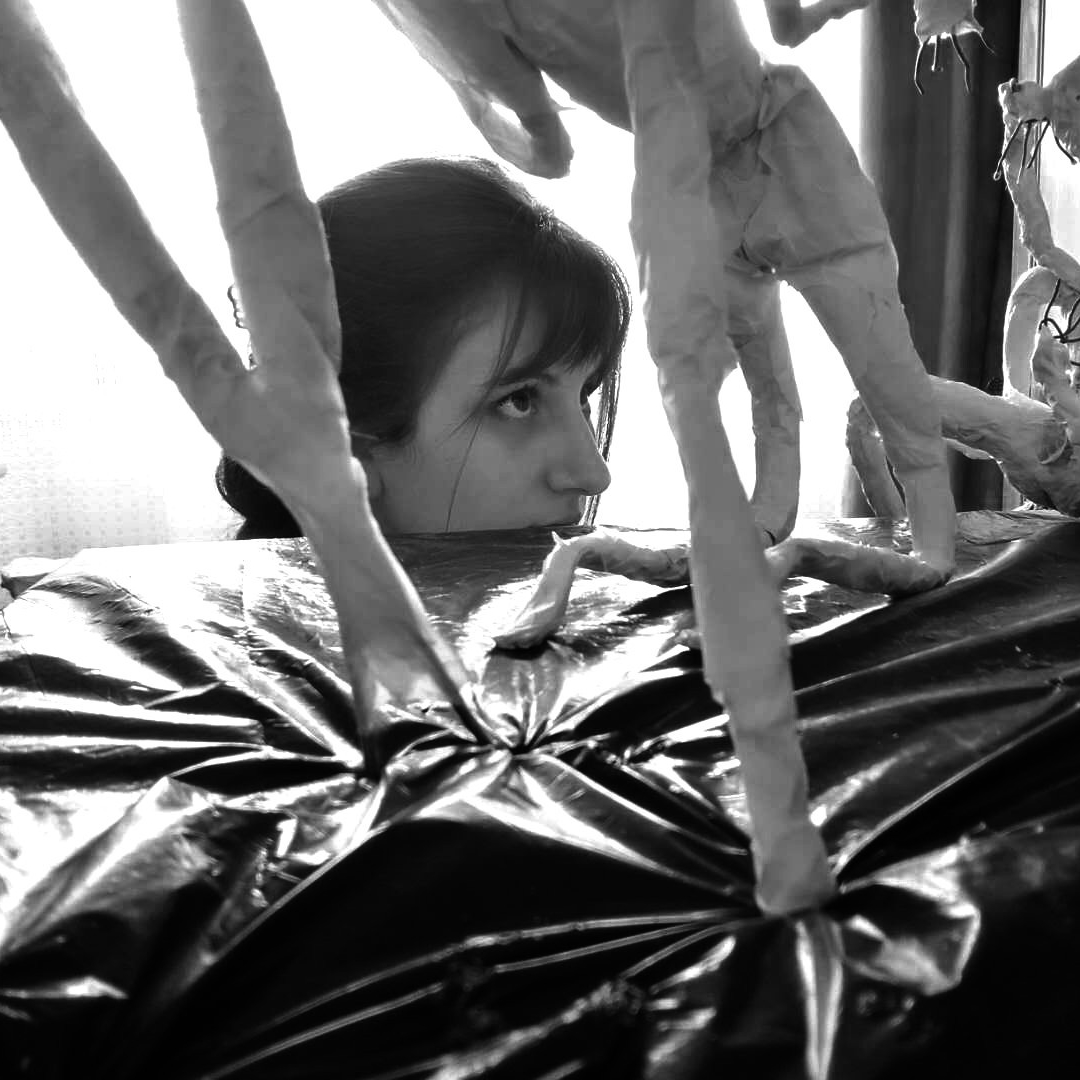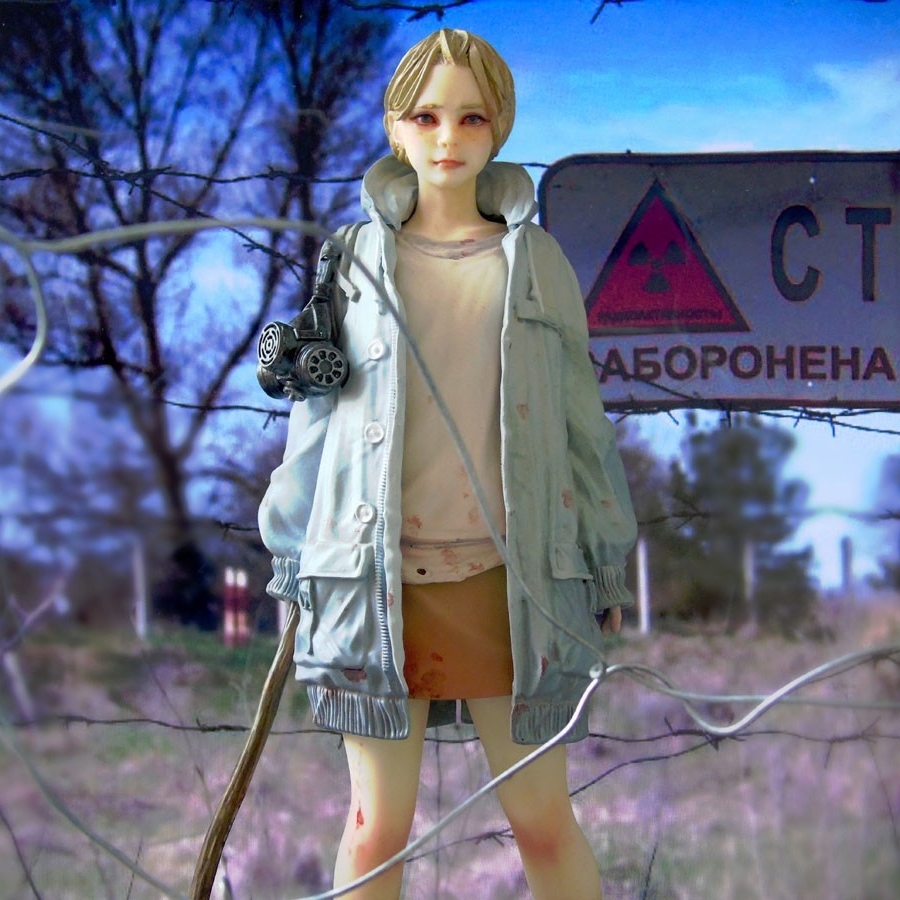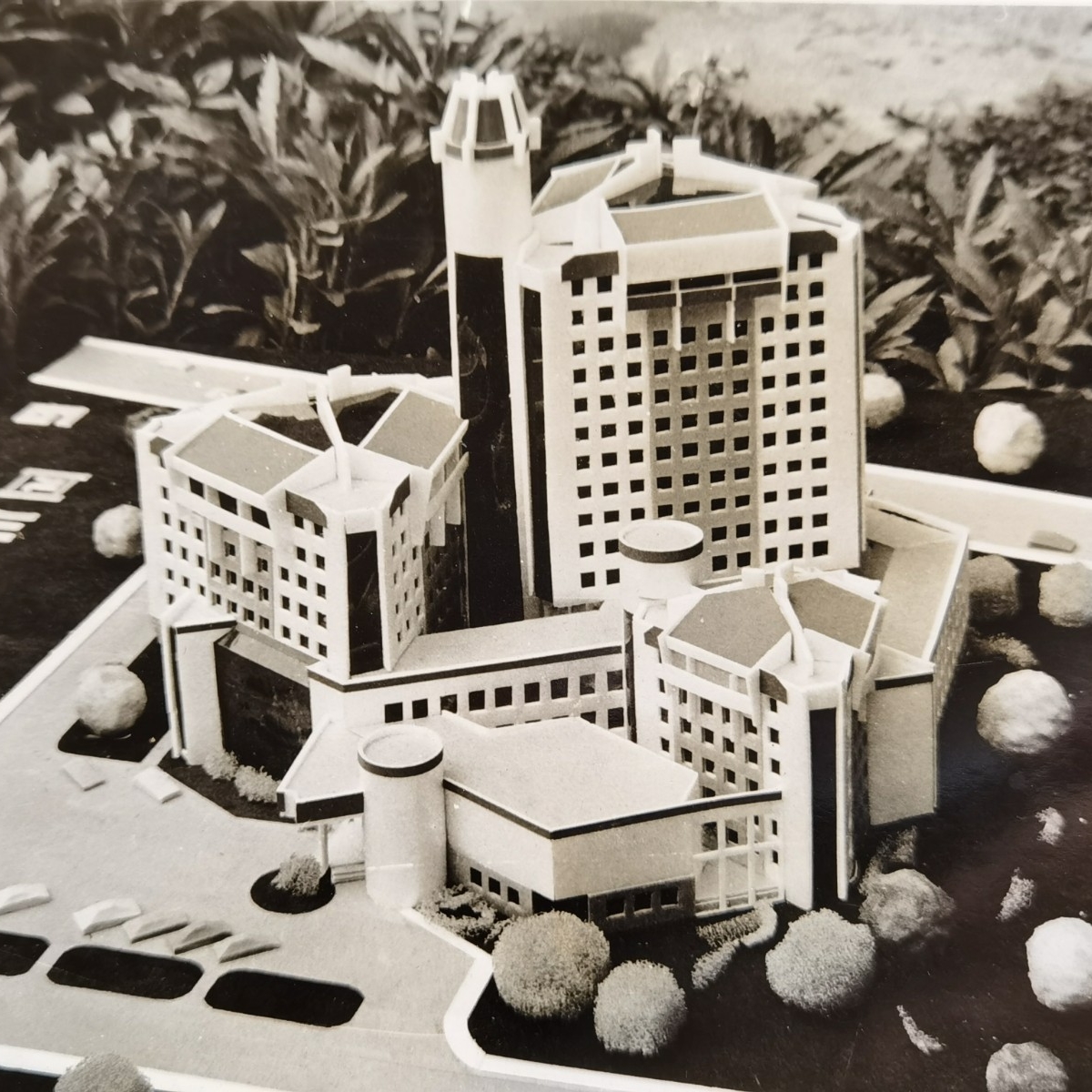In this section, we would like to introduce the Mobility Innovative (Transportation Design), a research topic featuring the intelligent travel system at the School of Design in CAFA. The tutors include Wang Xuanzheng, FRANK WU (U.S.), Wang Qiannan and Feng Dongsheng, as well as the third-year undergraduate students and the second-year postgraduate students that have participated.
In the era of online teaching, compared with fine arts majors, the teaching of design subjects seems to bear more advantage in connecting the networking and is closely related to our lives. How to innovate in “travel”? How does the course guide students to focus on the impact of smart cities, artificial intelligence, machine learning and the sharing economy in future travel modes? In the current situation confronting the pandemic, how should we establish “the means of efficient and safe dynamic human settlement organizations in China”? What is the only thing that the transportation design teaching in CAFA has done in the past decade? How do teachers and students adhere to it together?
About the Tutor

Wang Xuanzheng
Associate Professor of CAFA
Director of Transportation Design, the School of Design at CAFA
Director of the Postgraduate School of the School of Design at CAFA
Wang Xuanzheng has nearly 20-year research and development and teaching experience of transportation design, and he advocates combining design research with practice in teaching. He has published many design monographs such as “The Teaching Site of Automobile Design", “Form and Function”, "The Field of Design" etc.
The Pandemic and Teaching
The emergence of online teaching for all people caused by the pandemic is sudden, which forces us to embrace the existing trend—the arrival of an emerging technology based society intertwined with the Internet of things, cloud computing, super production, and artificial intelligence. The “decentralized” way of thinking based on distributed computing and blockchain technology has also interfered with teaching. The pandemic has forced education and emerging technologies to interact, which seems to be accidental, but in fact, it is inevitable. Today, we are in an unprecedented social context shaped by emerging technologies. To observe the phenomenon of online teaching today, we must first look back at the history of the development of higher education. It has not been a thousand years since the birth of universities in human society, and it is rare to see the signs that the education model has undergone earth-shaking changes. What we feel most strongly is that university education has evolved from an early extremely elite education model to a model that can be participated in by ordinary individuals in the current society. The development of the university education model is slow and is relatively solidified. An important reason is that the iterative update speed of social development driven by technology before the “third wave” is slow.
Nowadays, the emerging technological social context formed by the interweaving of cloud computing technology and network technology that can be shared in real-time has formed a high-pressure situation for the transformation of higher education models. In this case, this “sudden” emergence is more like an “induction”, or it may be “singular”, which allows us to carefully reflect on the concept of the university and the model of higher education. Whether it is the traditional face-to-face teaching and Q&A model, or the so-called “open-loop” education model that has gradually emerged in Europe and America. All of them are facing the possibility of instant collapse.

Fan Di'an, President of CAFA, visited the room of online teaching.
The “sudden” emergence of online courses for everyone has forced us to accept the changes in teaching methods driven by technological iterations. Due to its compulsiveness, the teaching scheme turns into a temporary response, so we must focus on the technology paradigm in the teaching process in advance. How will it develop in the future? What changes will happen? How can it react to the teaching content? What is the tendency in the future? Unquestionably, teaching turns to be a significant experiment in this process. How to confront the feedback from the experimental and the uncertainty hidden behind the feedback, has formed the potential challenges of education. Moreover, the context of emerging technology has intensified such a challenge furthermore.
Online Classes and Reflections
I personally think that the efficiency of teaching and learning has become higher in the process of online teaching. The main reason is the immediacy of online information exchange, recording, and sharing, which makes the interaction between teachers and students more expedite, and also persuades the attention span to be more concentrated. There is something I didn't expect before, that is, when we change from offline physical space to online teaching context, the technology automatically improves efficiency. Of course, “high efficiency” is mainly reflected in research, seminars and tutoring. Much of the content of design education or art education needs to be supported by practical links, and corresponding technology, equipment, and systems are required to provide collaborative support. As online teaching this time was a sudden situation, it was limited in this regard.
This may be an opportunity to induce the establishment of an educational technology support system that extends online and from online to offline. Like the highly developed domestic logistics network, a new organizational system for technical support for education is formed. During the pandemic, the well-developed logistics network played an extremely critical role. Without a mature logistics system, the response to the pandemic may have been even more difficult. Similarly, the educational technology support system will also greatly promote a change in educational models. At present, the system is “reversed” demand, which is different from the logistics network establishment procedure. Once it takes shape, the trend of the subsequent design education method being subverted will be completely clear. It is not an exaggeration to ask whether a university campus is still necessary. This really become a question worth considering.
 Notes of Online Course
Notes of Online Course
 View of Online Teaching
View of Online Teaching
There are also many issues to reflect on during the teaching process. The most important thing is how we keep a balance—we need to balance the conflict when the existing and inherited unique “fields” of design education are transplanted to the virtual digital platform. If we admit that the trend brought by information technology is inevitable, the new content in the process will inevitably touch the original system, logic, and even ethical issues.
At present, there have been a large number of accidents in the process of online teaching, ranging from teachers inadvertently broadcasting their privacy to the large-scale reconstruction of the organizational method formed by the “family participation” and “national participation” of online courses. What is behind these phenomena highlights the difference in value identity among different groups participating in the operation of online education mode induced by emerging technologies. Compared with offline classrooms, online platforms amplify these differences. Before this catastrophe, we have no way to learn in terms of constructing an identity of educational value under a new technological background. New fields such as live streaming and short videos are more about the maturity of business models and the social and cultural consumption inspired by business models. The formation of the method is completely different from the practice of emerging technologies in the field of education. We need to reflect on how to construct this practice.
Brief Intro of Online Class
Innovative Design of Intelligent Mobility System
Tutors: Wang Xuanzheng, FRANK WU (U.S.), Wang Qiannan and Feng Dongsheng
The course is a mobility innovation (transportation design) research topic targeting the third-year undergraduate and the second-year postgraduate students, which aims to guide students to complete the definition of the future paradigm including the mobility innovation (transportation) system in the systematic objective method and logical subjective method.
The course will be based on the study of the development logic of typical events in the current technological society, guiding participants to analyze the problems that should be paid attention to in the development of intelligent mobility systems, and analyze the problems based on technical incentives and logical systems, as well as proposing solutions and implementation pathways for the problems. This course encourages a research direction that focuses on the impact of smart cities, artificial intelligence, machine learning, sharing of the economy, and the wave of decentralization on future travel modes. It also encourages participants to define the future on this basis, define and evaluate the future in an all-round way in the narrative of the design discipline, and propose solutions in the form of specimens. The curriculum integrates mobility innovation, transportation, industrial research, unmanned driving, AI design and research, robotics, and other fields. It uses a decentralized organization to carry out cross-field empowerment cooperation and encourages students to create a “new species system”. Combined with the current pandemic situation, the theme of this course is “How to create an efficient and safe way for a dynamic human settlement organization in China”.






The purpose of this course is based on the logic of design context iteration. From the three levels of manufacturing (Internet) technology iteration, manufacturing method development, and information storage and exchange carrier evolution, we divide the social development sequence since the industrial revolution into four contexts, namely, “Design for Production”, “Design for Design”, “Design for Interface” and “Design for Computing”. In different contexts, the definition of design and the working methods presented by the design is completely different. The reason for choosing the above three factors for context construction is that these factors are the most direct variables in the interaction between emerging technology, people and society, and are the main motivation for changing the definition of macro-design and working methods.
 The Logic Structure Diagram of the Course
The Logic Structure Diagram of the Course
I. The First Context: “Design for Production”
A context that was established in the pre-computer and Internet era. It is based on assembly line production and relies on paper media to record and exchange information. Here, the main function of design is to serve large-scale production and create added value through special skills. The main output is physical product design.
II. The Second Context: “Design for Design”
The emergence of computers and terminal networks has changed the way information is recorded and exchanged. Data is stored and edited by computers and exchanged via the Internet. Thus, a global scale of production division and collaboration has emerged. The design has changed its position so it is used as a subordinate to industries. It has become a discipline with an independent academic structure, and has formed a new social function defined by “design”. Corresponding information technology initially intervened in traditional industries, triggering the beginning of industrial technology transformation.
III. The Third Context: “Design for Interface”
The mobile Internet (shared network) has once again iterated the way of information recording and exchange, and the “cloud” technic has enabled technology to trigger a deeper direct connection with the audience. On the basis of global industrial cooperation, flexible production technology is developing rapidly, and intelligent “new species” that meet individual needs have become an important demand. How to use the appropriate interface (physical interface and non-material interface) to form the user’s acceptance of new technologies and new services has become the main function of design. “Design” as a “method”, begins to participate in the social creative activities, and turns into a design context with social attributes.
IV. The Fourth Context: “Design for Computing”
The Internet of things, self-production, and artificial intelligence constitute the context of “Design for Computing”. Distributed computing methods and machine learning completely reconstruct the content and methods in the “interface” design context—design is no longer based on a specific tool in a certain field, nor is it just an innovative method in a specific social field—instead, it has evolved into a tool for the masses to “self-organize” in the “decentralized society”. “Design” influences and changes the social process, creating a new type of sustainable social value with “empathy”.
How to balance the relationship between each student's self-variables and different contexts is an important criterion for determining the paradigm, method, and system of this course. This balance is not static. It is necessary to determine the proportion of knowledge content in different contexts, and then dynamically adjust the proportion of knowledge and the logic of teaching plans according to the changes of context. This is also the fundamental principle of transportation design teaching in the context of emerging technology, which determines the upgrading of teaching content and definitions.


View of The Offline Teaching of the Studio
 Tutor FRANK WU was working at GM Design Center
Tutor FRANK WU was working at GM Design Center
During the development of the transportation design education in CAFA for more than ten years, we have upgraded the subject content from automobile design to vehicle design and then iterated to the current innovative design of travel. During this process, we have been responding to the challenges brought up by the emerging technology context. Because of the huge volume and highly specialized structure of the automobile industry, students strongly rely on the first and second contexts for the learning content, emphasizing the knowledge cluster with automobile styling design as the core.
Meanwhile, students can identify with the creation of “interfaces” in the third context to the greatest extent, but lack a complete method to build a self-learning system. A more noteworthy phenomenon is that timeliness and site-specificity will often bring fragmented content in the fourth context into the third context where students are thinking, causing a blurring tendency for them in learning, practice, and research content. How to take into account the above content and form students’ own independent research methods and research directions is the focus of this course. Regarding these variables, the teaching of transportation design in CAFA has done only one thing in the past ten years, that is to explore and construct a reasonable learning path that suits their own characteristics for students.
In our view, in an art academy, creating a pretty vehicle is a basic requirement for students. Tutors expect students to consider the construction of the system, as well as how to use this new system as a standard to design cars, propose innovative plans, influence industries and social development. In other words, we emphasize in this course that students are expected to stimulate the construction of a new-type social organization method.
The goal sounds a bit lofty, but we encourage students to have ideals. In this case, we require every student in this course to construct their own research path and logic method. It introduces an independent perspective in terms of observing and solving problems for everyone. As a research-based topic, the variety mentioned above is vital for this course. What is more gratifying is that with the advantage of information technology in online teaching, all information of this course can be recorded in real time, so that teachers and students can reflect on the previous research more comprehensively. Reflecting is also carried out in offline courses, but there are occasional gaps in the continuity of information recording, and online courses that show better continuity.

President Fan Di'an was exchanging ideas with Guest Professor KIM SUNG YONG from Korea.
The course encourages students to create “new species”, just like the name of another course which is “The Future To Be Defined”—at the current moment, there are a lot of new things that we need to define. They have not existed in the past, and have appeared today. In the field of travel or transportation design, what are new species? How can they exist in our complex technological social system and across different domains? This is another key to this course.
In addition, as the historical topics of the transportation design major, this course still insists on the Industry-University-Research Collaboration within the industry. Several important global automotive companies are the partners of this course. The result of dealing with the unknown may not be important, it is to start exploring the real industry platform that counts.
View of Students' Work
Gao Ziyu, "SARIA—The Extension and Regenerationof Space"







Zhen Jianhui, "Mobile Space in the Post-information Era"






Song Wenbin, "The Future Evolution of nfrastructure—Rules for the Survival of Urban Viaducts in the Future"






Lang Yue, "Research on The Close-view Future Working Patterns and Modular Workstation"




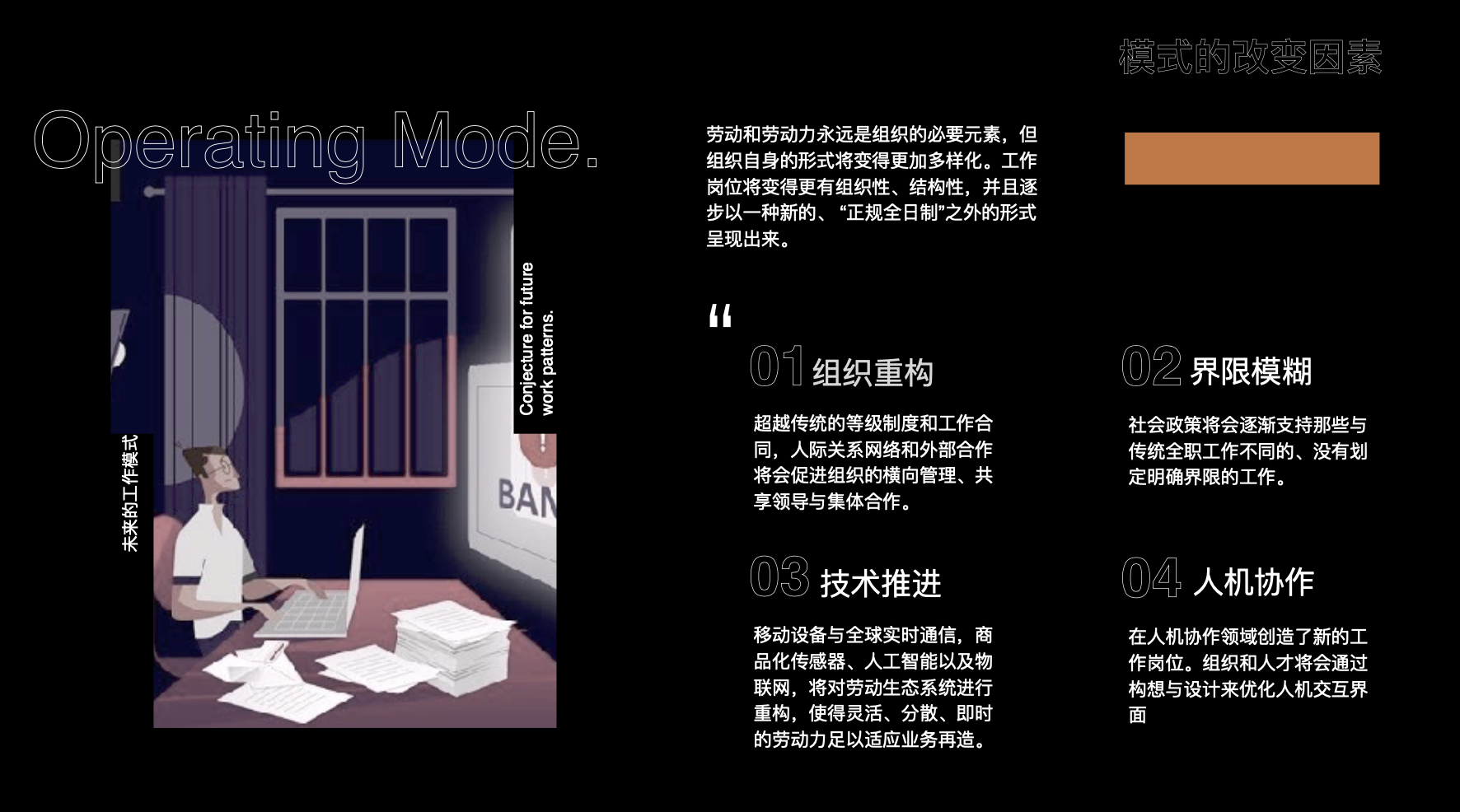

Niu Haotian, "Chinese Romanticism and National Sports Car Design"

Wang Chen, "The Passive Road Safety System under the L3-level Automatic Drive"



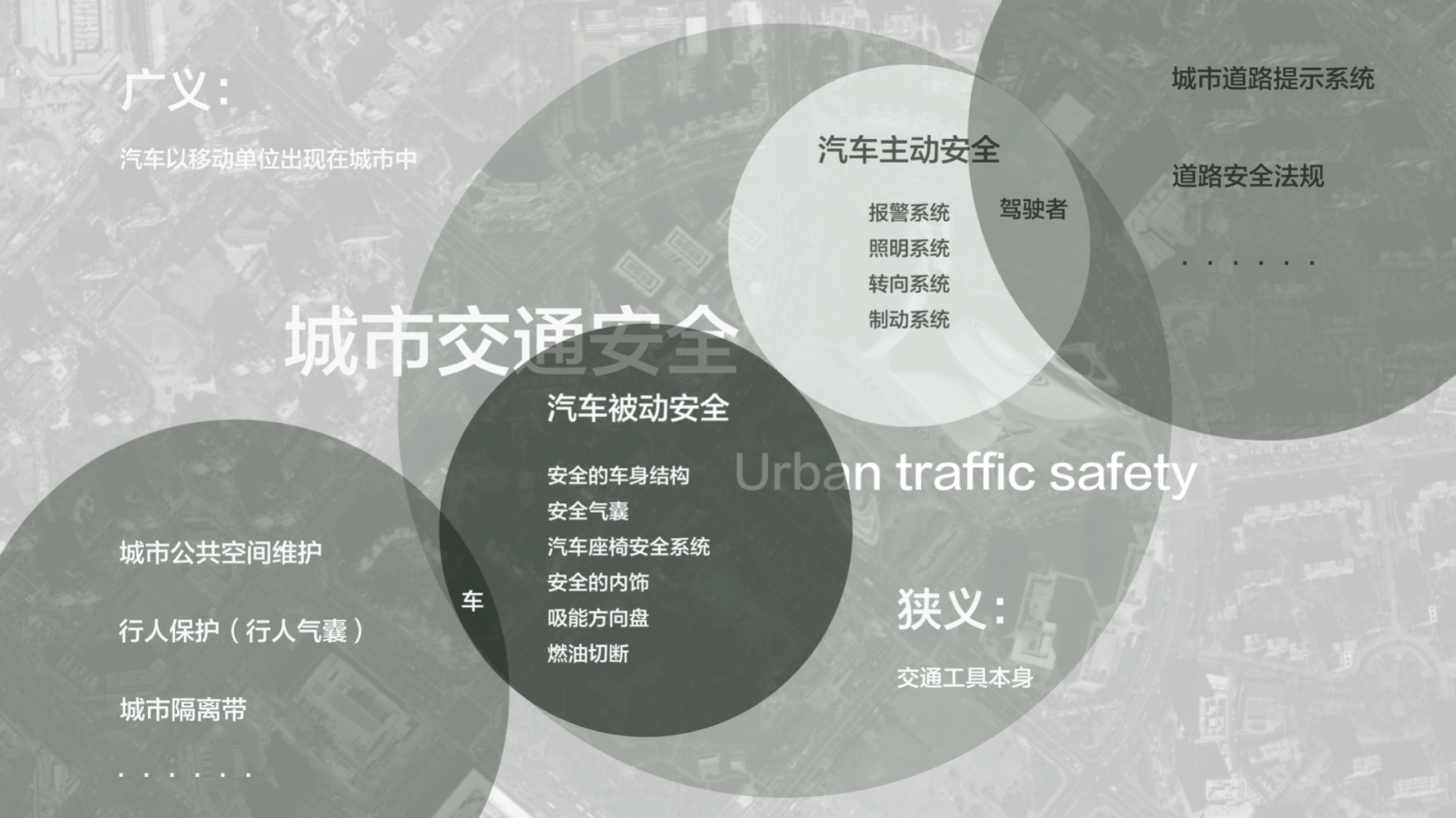


Li Jianing, "The Multi-dimensional Travel Way and Language Mode of New Urban City"






Liu Zhu, "Study on the Form and Function of MG Brand in the Context of New Technology"






Yang Cheng, "The Conceptual Car Design for Roewe"






Image and Text Courtesy of the Tutors and Students.
Edited (CN) by Zhang Yizhi.
Translated by Emily and Edited (EN) by Sue.








